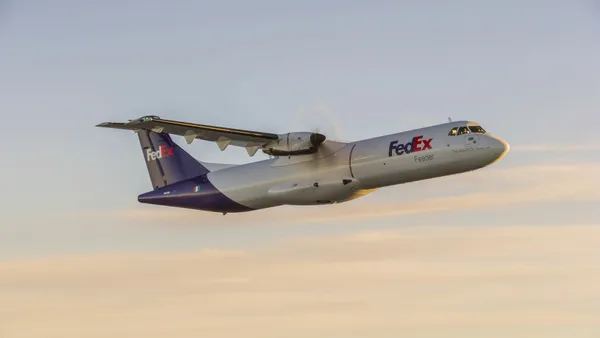Dive Brief:
- Available cargo capacity increased for the 11th consecutive month in February, surpassing 2019 levels for the first time, according to a March 2 update from Xeneta’s Clive Data Services.
- Increased capacity comes as demand for air cargo declines. Volumes dropped 4% YoY in February with shippers continuing to rely on cheaper modes of transport in addition to grappling with labor challenges and inflationary pressures.
- “The volumes are not there, flights are less full, and more capacity will be coming in April as summer flight schedules commence, so I don’t see fundamental changes that will help the current market conditions,” Xeneta’s Chief Airfreight Officer Niall van de Wouw said in the report.
Dive Insight:
With normalizing ocean rates and easing capacity constraints, many shippers are relying less on air cargo to cut back on freight costs. Despite optimistic forecasts for air freight demand in Q3 due to inventory restocks, the market “might still be seeing zero overall growth for general cargo later in the year,” van de Wouw said.
Going forward, the shifting air market will likely require a new guide for measuring industry growth.
“The stabilizing market is creating a new baseline. It’s time to let go of pre-COVID comparisons,” van de Wouw said.
Over the last five weeks alone, capacity increased 17% YoY, according to a March 2 update from air cargo data publishing company WorldACD.
Lessor Air Transport Services Group forecast YoY decreases in block hours among Amazon and other large customers in the first half of the year, according to a Feb. 24 earnings call. Amazon will return eight of 12 767-200 freighters initially leased in 2016. Other carriers like FedEx are also looking to rightsize their network as demand remains subdued.
Rates have also continued to drop as demand further decreases and capacity grows.
February spot rates from Asia Pacific to North America were down 8% from last month and 60% YoY to $4.42 per kilogram, according to Clive Data Services. Meanwhile, rates from Europe to North America were averaging $2.88 per kilogram, down 8% MoM and 40% YoY.
While still down YoY, spot rates for shipments between China and the U.S. saw a slight uptick in March, up 3.4% WoW to $4.62 per kilogram as of March 6, according to the TAC Index. Meanwhile on the Transatlantic trade lane, spot rates from Frankfurt to the U.S. are reported at $3.30 per kilogram, up 3.4% WoW.
Regardless of the challenging market, some industry players continue to invest in their cargo operations. ATSG, for instance, intends to allocate a bulk of its $850 million capital expenditure budget toward the expansion of its 767 fleet, and other freighter types like A321s, A330s and 757s, CFO Quint Turner told analysts.














